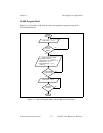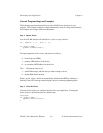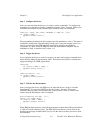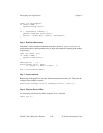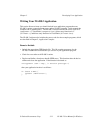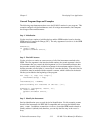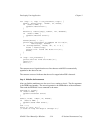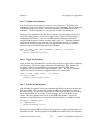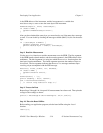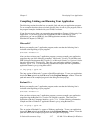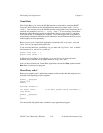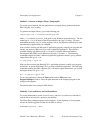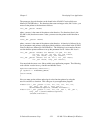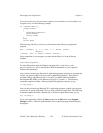Chapter 3 Developing Your Application
© National Instruments Corp. 3-15 NI-488.2 User Manual for Windows
Step 5. Configure the Instrument
After initialization, the instrument is ready to receive instructions. To configure the
multimeter, use the Send routine to send device-specific commands. The first argument
is the number of the access board. The second argument is the GPIB address of the
multimeter. The third argument is a string of bytes to send to the multimeter.
The bytes in this example instruct the meter to measure volts alternating current (VAC)
using auto-ranging (AUTO), to wait for a trigger from the Controller before starting a
measurement (TRIGGER 2), and to assert SRQ when the measurement has been
completed and the meter is ready to send the result (*SRE 16). The fourth argument
represents the number of bytes to be sent. The last argument, NLend, is a constant
defined in the header file which tells Send to append a linefeed character, with EOI
asserted, to the end of the message sent to the multimeter.
Send (0, fluke, "VAC; AUTO; TRIGGER 2; *SRE 16", 29L, NLend);
if (ibsta & ERR) {
gpiberr("Send setup error");
}
Step 6. Trigger the Instrument
In the previous step, the multimeter was instructed to wait for a trigger before conducting
a measurement. Now send a trigger command to the multimeter. You could use the
Trigger routine to accomplish this, but because the Fluke 45 is IEEE 488.2-
compatible, you can just send it the trigger command, *TRG. The VAL1? command
instructs the meter to send the next triggered reading to its output buffer.
Send(0, fluke, "*TRG; VAL1?", 11L, NLend);
if (ibsta & ERR) {
gpiberr("Send trigger error");
}
Step 7. Wait for the Measurement
After the meter is triggered, it takes a measurement and displays it on its front panel and
then asserts SRQ. You can detect the assertion of SRQ using either the TestSRQ or
WaitSRQ routine. If you have a process that you want to execute while you are waiting
for the measurement, use TestSRQ. For this example, you can use the WaitSRQ
routine. The first argument in WaitSRQ is the GPIB board number. The second
argument is a flag returned by WaitSRQ that indicates whether or not SRQ is asserted.
WaitSRQ(0, &SRQasserted);
if (!SRQasserted) {
gpiberr("WaitSRQ error");
}
After you have detected SRQ, use the ReadStatusByte routine to poll the meter and
determine its status. The first argument is the GPIB board number, the second argument



